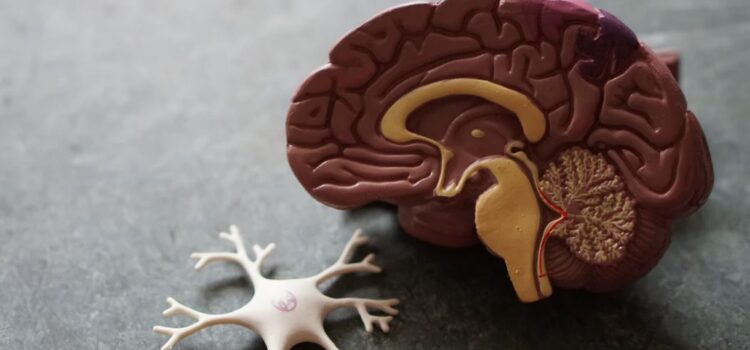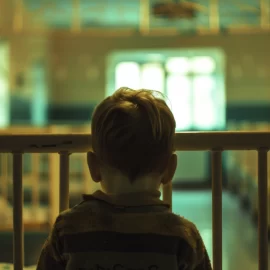

This article is an excerpt from the Shortform book guide to "The Man Who Mistook His Wife for a Hat" by Oliver Sacks. Shortform has the world's best summaries and analyses of books you should be reading.
Like this article? Sign up for a free trial here .
What is Oliver Sacks’ The Man Who Mistook His Wife for a Hat about? What does his psychological research reveal about how the brain works?
In his book The Man Who Mistook His Wife for a Hat, Oliver Sacks discusses some of the most extreme cases of neurological impairment he has witnessed throughout his work. Sacks examines these case studies in hopes of learning how the brain makes up for impairments in one area by overcompensating in another.
Continue below for a brief overview of The Man Who Mistook His Wife for a Hat.
The Man Who Mistook His Wife for a Hat
The late neurologist Oliver Sacks dedicated his life to studying the mysteries and extraordinary powers of the human brain. In The Man Who Mistook His Wife for a Hat, Oliver Sacks presents the stories of his patients, all of whom were suffering from some form of neurological impairment. In sharing these stories, Sacks weaves a narrative that demonstrates the remarkable complexity of the human brain and its extraordinary capacity to adapt. As we’ll see, the brain is the source of our very humanity, giving us our identity and deepest sense of self.
As we study the lives of these patients, some key themes emerge:
- The brain has a remarkable ability to compensate for neurological shortcomings in one area with neurological strengths in another. Thus, a patient with impaired powers of speech might excel at the visual arts, or a patient suffering from an inability to understand words might be better at discerning the non-verbal parts of language.
- The neurological profession has often misunderstood neurological disorders, thinking of them solely as illnesses that must be “cured.” But sometimes, the disorder gives meaning, hope, and identity to the patients experiencing them—and the patients have no wish to be “cured.”
- What manifests outwardly as the symptoms of a disorder are often attempts by the brain to provide order, regularity, and a consistent self-narrative for the patient. Thus, a man with retrograde amnesia that prevents him from forming short-term memories might constantly weave fantastical stories about who he is to strangers, so that he always maintains a consistent notion of the self.
Deficits
Neurologists often speak of brain disorders in terms of deficits. A deficit is an impairment of some element of neurological functioning, usually linked to brain damage to a particular area.
But the brain is adept at turning deficits in one area into surpluses in another—enabling patients to navigate their world, make sense of what they see, and retain some sense of identity and self.
Agnosia
We can see a clear example of a neurological deficit in the case of Dr. P, who experienced strange problems with visual recognition. He was unable to recognize the faces of his students and was known to pat inanimate objects like parking meters and fire hydrants, thinking they were children. He even struggled to identify his own wife—whose head he often grabbed at, believing it was a hat. Dr. P was suffering from agnosia—an inability to recognize and interpret visual data.
Sacks found that Dr. P could only recognize pictures of family and friends in which the subjects had distinct features—he identified a photo of his brother Paul, for example, by noting Paul’s square jaw and big teeth. He could identify only the features and use them as a clue to guess the identity of the person, but he was not truly recognizing them.
Despite this, Dr. P’s mind seemed to compensate for this deficit by crediting his neurological “account” in other ways. He had exceptional powers of abstract description and excelled at schematic mental models involving abstract shapes—for example, he was a skillful player of blind chess, able to perfectly visualize the board and pieces in his mind. His intact abstract sensibility gave him some means of interpreting what he saw with his eyes, providing him with a tool to order, recognize, and make sense of his world.
Aphasia
Some people who’ve suffered brain damage are unable to understand language. They suffer from aphasia—the inability to process and understand spoken words.
In the 1980s, Sacks was at an aphasiac ward of a psychiatric hospital, where the patients were watching a televised speech by US President Ronald Reagan. Their aphasia inhibited them from processing and understanding the words the president was speaking. But they could still understand the non-verbal aspects of language, indeed, far better than most other people.
They only heard Reagan’s tone and inflection, and thus, saw the polished actor-turned-president as a dissembling phony, keenly picking up on the falseness of his tone and body language. And their reaction to his speech was not reverential respect—it was uproarious, hysterical laughter!
Superabundance
Throughout most of the history of neurology, practitioners have focused on these deficits and the problems that result from the loss of function. But what about the opposite phenomenon, of excesses and superabundances? What happens when neurological functions work on overdrive?
When neurological disorders manifest as excesses and superabundances, they heighten some of the most crucial aspects of our humanity—impulse, will, action, and passion—and remove our inhibitions. Patients who experience the rush of these highs often report feeling more alive and human than ever as a result of their disorder. The patient does not wish to be “cured,” because they do not believe themselves to be ill.
Tourette’s Syndrome
One of the most famous disorders of superabundance is Tourette’s syndrome. Associated with an excess of the hormone and neurotransmitter dopamine, Tourette’s is characterized by an excess of nervous energy, commonly finding expression in repetitive motor movements called tics, as well as verbal outbursts.
One man, who called himself “Witty Ticcy Ray,” had experienced severe tics since the age of four. And yet, Ray forged a meaningful life for himself despite his affliction—indeed, he claimed it gave him an entire identity. He was an accomplished jazz drummer and a masterful ping pong player, both fields in which the speedy reflexes and reactions caused by his syndrome appeared to give him an advantage.
When Sacks began treating him with Haldol, an antipsychotic medication that blocks dopamine receptors in the brain, Ray felt he’d lost some essential part of himself. Although his tics decreased, he became slow and deliberate, unable to engage in the witty spontaneity and flights of inspiration that had so defined him. Worse still, he’d lost his musical fluidity as a drummer.
Ray didn’t want to entirely shed the part of himself that was defined by Tourette’s. So he and Sacks decided on a dual strategy—he would take Haldol during the weekdays but would stop taking it on weekends. On Saturday and Sunday, he would fully embrace his “Witty Ticcy Ray ” persona.
Korsakov’s Syndrome
As humans, we have a basic need to shape a narrative about ourselves and how we came to be who we are. Sacks saw the most profound embodiment of this elemental need in a patient named Mr. Thompson. Thompson suffered from Korsakov’s syndrome, an alcohol-related condition that impairs short-term memory and causes retrograde amnesia—the inability to recall short-term memories.
Thompson’s condition caused him to constantly adopt new personae for himself, refashioning his world in an ever-changing drama with a revolving cast of characters. All the while, Thompson would regale those he encountered with fantastic anecdotes. He gave the outward appearance of a funny, charming, and ebullient man.
But all the while, he was suffering from the devastation of his short-term memory, using his powerful imagination to reinvent the world around him. This provided him with what felt like stability and normalcy, when his true reality had actually gone to pieces.
Visions
Neurological abnormalities can also reshape the human experience through our dreams, revelations, and visions. These sublime moments are central to the human experience and have been the focus of art and spirituality throughout human history.
But they are actually caused by neurological phenomena. Specifically, experiments have shown that stimulation of the temporal lobes can conjure extraordinarily vivid auditory, visual, and even olfactory memories from one’s past.
Musical Seizures
One of Sacks’s patients was an 88-year-old deaf woman named Mrs. O’C, who lived in a retirement home. She had begun hearing old Irish folk songs playing, often quite loudly, sometimes waking her up in the middle of the night. She realized that the songs weren’t coming from a radio or any other external source—the music was playing entirely in her head.
When he ran an EEG test on her, Sacks saw that Mrs. O’C had suffered a stroke and was experiencing temporal lobe seizures during the moments when she indicated that a song was playing. The music brought Mrs. O’C back to her early childhood in Ireland, a period of her life of which she had no concrete memories at all. Her parents had both died before she turned five, after which she’d been sent to America to live with an aunt. The music brought back lost memories of Mrs. O’C’s loving mother. In these memories, it was her mother’s voice that was singing the beloved songs. This confirmed to Mrs. O’C that she had had someone in her life who’d loved and cared for her.
For Mrs. O’C, the seizures were a gift, an opportunity to regain a lost part of herself and open a door that had always been shut.
A Voyage to the Past
Bhagawhandi was a young woman of Indian origin who was suffering from a brain tumor that caused seizures in her temporal lobe. The seizures transported her to the scenes of her girlhood in India, an experience she found enjoyable.
These were rich and detailed journeys to the past—highly organized, presenting consistent and coherent landscapes and characters. She saw her childhood home, village, and the surrounding countryside in vibrant detail. She was not merely seeing these scenes—she was inhabiting and experiencing them.
Bhaghawandi retreated more and more into her dream world, before she came to live there exclusively right before her ultimate death. Her journey to the past was complete.
Reactivating Dark Memories
But the reactivation of lost memories can also be dark and disturbing. One patient named Donald had murdered his girlfriend while under the influence of the drug PCP. Although he had no memory of committing the act, he was sentenced to a hospital for the criminally insane.
Five years later, while out on parole, Donald became involved in a bicycle accident that caused damage to his frontal lobes. Soon after, he began having awful nightmares of the long-suppressed murder. The nightmares turned into waking visions, in which he could suddenly remember and see it in all its horror. The damage to his frontal lobes had reactivated the memory, which now haunted him. Donald was nearly driven to suicide by the suddenly unescapable scene of carnage playing out in his mind.
Thankfully, with therapy and anticonvulsant drugs, Donald’s temporal lobes returned to a normal state and he found peace in gardening and nature, away from people. He managed to get to a place where he could remember the murder but was no longer consumed by it.
Intellectual Disability
Some of Sacks’s most meaningful work was with intellectually disabled patients—those with neurological impairments that left them unable to perform even the most basic functions. He noted that such patients often struggled with abstraction and, instead, inhabited a purely concrete world.
Broadly speaking, abstract thought deals with the world of ideas and concepts that don’t “exist” in the physical world—like humor, freedom, and irony. Concrete thought, meanwhile, concerns those things that do exist in the physical world. Sacks believed that intellectually disabled people, with minds devoid of abstraction, experienced a more intense and vivid world.
We cannot be complete beings without the concrete, and its powers of expression and feeling are just as poignant and powerful as those of abstraction. Sacks saw some of the essential elements of humanity through his work with the intellectually impaired.
Meaning in Narrative
Rebecca was a 19-year-old girl with severe intellectual disabilities. But she had an extraordinary capacity to understand stories and narrative and fully grasped the metaphors, symbols, and imagery contained within them—because symbols, after all, are concrete objects representing abstract ideas. She was liberated from her intellectual constraints when she entered the narrative-based worlds of literature and spirituality.
In working with Rebecca, Sacks found that treatment in traditional clinical settings did little for her. But when she enrolled in a special theatre group for the intellectually disabled, she thrived. Rebecca was able to make meaning and become complete by playing characters.
Rebecca’s limitations concealed the parts of her that were preserved—and indeed, thriving.
After his experience working with her, Sacks saw that neurology focused too much on deficits, with its diagnostic and treatment tools failing to properly account for the full powers of a human being.
Connection Through Art
Jose was a young man in his early 20s who was unable to communicate verbally—symptoms that doctors would later use to diagnose Jose with autism. His parents, fearful that he would suffer a seizure in public and become injured, began keeping him in the cellar of their home when he was a boy. For 15 years, Jose was deprived of nearly all links to the outside world.
After a particularly violent seizure, Jose’s parents finally took him to the hospital, where EEG scans confirmed that Jose was experiencing severe temporal lobe disorders on both his left and right sides.
The hospital staff discovered that Jose had a remarkable talent for drawing. Indeed, Jose’s sketches were his only mode of self-expression, deprived as he was of other means of communication. His excellent performance in visual and spatial tasks seemed to compensate for verbal skills deficits.
The first time Sacks met Jose, he was thoroughly impressed by the young man’s success in drawing a watch in great detail. At their next meeting, Jose was able to reproduce a landscape scene on a magazine cover. In fact, Jose’s copy surpassed the original in many ways—he imbued the scene with mood, feeling, and character that had been lacking in the original. Subsequent drawings from Jose hinted at an interior life rich with creativity, emotion, and a sophisticated appreciation for aesthetics.
Sacks saw that a talented artist like Jose had the potential to lead a rich and fulfilling life, perhaps as an illustrator. But he lamented the short-sightedness of the mental health system of which Jose was a part. Nurturing his prodigious talents would require a patience that the other doctors around him lacked. Sacks lamented that Jose’s talents were likely to be wasted by an outdated mental health framework that saw people like Jose as somehow less than human.
Untapped Potential
Sacks’s work with his patients shows the pitfalls of traditional thinking about neurological disorders. As we’ve seen, people suffering from these conditions can lead rich lives filled with joy and creativity. Studying disorders of the human brain, ironically, can give us insight into just how powerful it is and how it is the source of so much of our humanity.
It is incumbent on the neurological profession to expand its view of neurological disorders and of the people who are afflicted by them. There is enormous untapped potential and capacity for them to lead meaningful and productive lives. But first, we must abandon the idea that such individuals are irreparably damaged or abnormal. But perhaps their “normal” isn’t deviant or wrong, but merely different than our own. Rather than attempting to cure or alter it, we should open ourselves up to the possibilities that the study of their unique brains can reveal to us. In recognizing their humanity, we come to recognize our own.

———End of Preview———
Like what you just read? Read the rest of the world's best book summary and analysis of Oliver Sacks's "The Man Who Mistook His Wife for a Hat" at Shortform .
Here's what you'll find in our full The Man Who Mistook His Wife for a Hat summary :
- Neurologist Oliver Sacks' case studies on patients with neurological impairments
- The remarkable complexity of the human brain and its extraordinary capacity to adapt
- How Sacks' work with his patients shows the pitfalls of traditional thinking about neurological disorders






